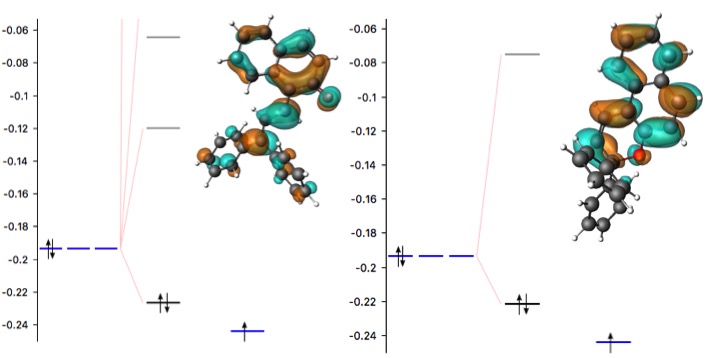Designing new dyes for smart solar windows
A new dye-sensitized solar cell (DSSC) is reported, using donor-bridge-acceptor dyes with a ‘smart’ photochromic diphenyl-naphthopyran bridge. This bridge unit converts under radiation switching from a transparent to a colored state, while it thermally reverts to the uncolored state. Therefore, at higher levels of solar irradiation a different photostationary state is reached, which benefits from both a higher power conversion efficiency (up to 4.17%) and a lower transmittance.
Density functional theory calculations with ADF helped to design the most promising dyes for stable DSSCs which exhibit the self-adjustable light transmittance, and have the right orbital level alignment with the conduction band edge of TiO2 and the oxidation potential of the tri-iodide/iodide redox couple.

The designed self-adapting DSSCs reduce their transmission from 59% to 27% when being illuminated reaching a maxium photocurrent of 12.59 mA cm-2, showing great promise for smart solar windows.
Huaulmé, Q. et. al., Photochromic dye-sensitized solar cells with light-driven adjustable optical transmission and power conversion efficiency, Nature Energy 5, 468–477 (2020).
Nature news & views: “Shades of Transparency”